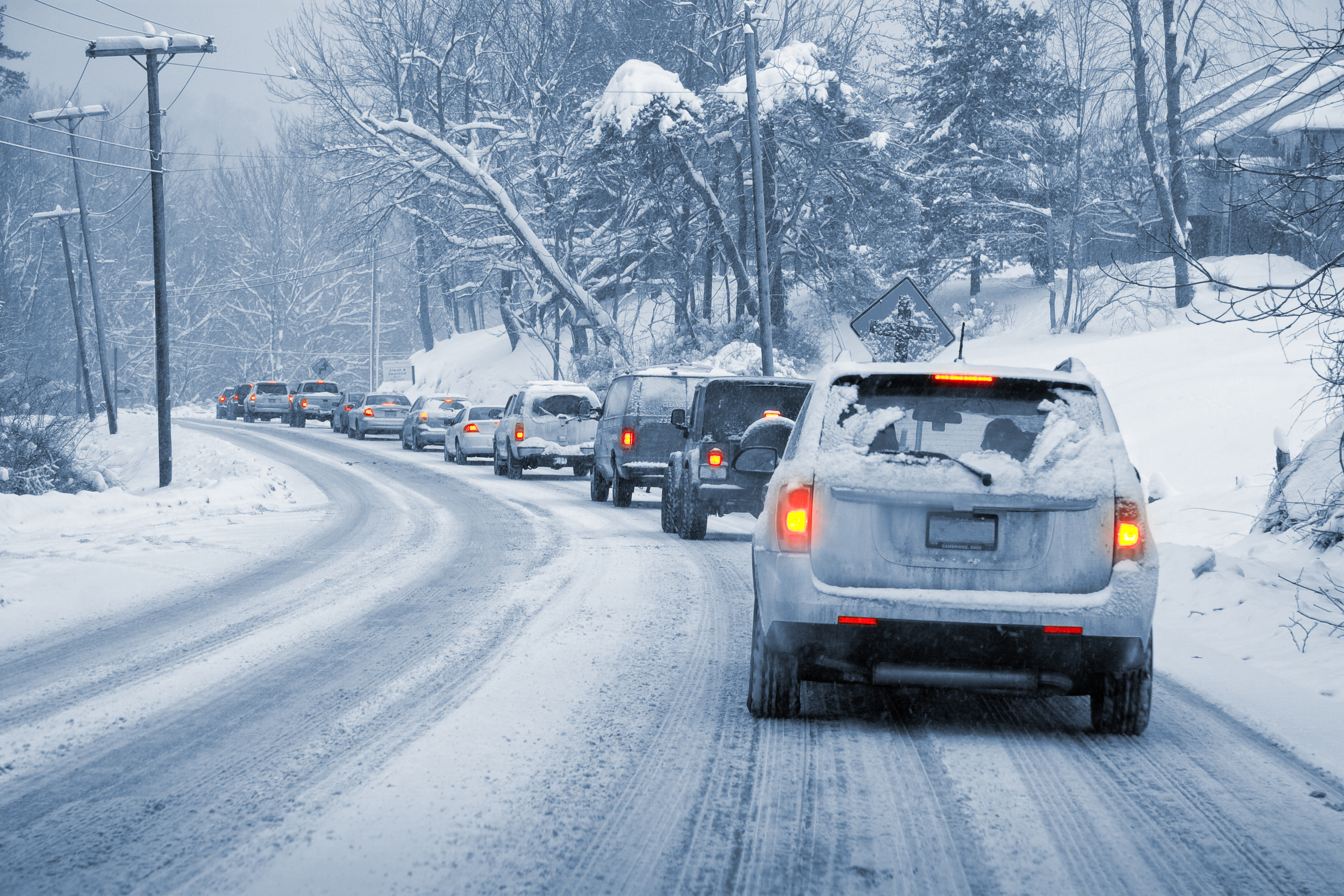Winter Driving Safety

Winter can be a beautiful time of the year, especially when a fresh layer of snow covers the ground. Winter can also be a very dangerous time of year if you are traveling. Winter driving is a tricky and dangerous business. Roads are slick and slippery, and falling snow or heavy rain can make it hard to see. Safe winter driving requires a balance of common sense and preparation.
Here are a few driving tips to help you make it to your destination safely:
- Prepare a winter emergency kit. Keep blankets, warm clothing, water, a first aid kit, a flashlight and batteries, a shovel and ice scrapers, an extra charged cell phone battery, canned nuts or fruits, and your normal roadside emergency kit in your trunk. It’s also a good idea to have a colorful scarf or bright cloth to tie to your antenna to signal that you need assistance.
- Winterize your vehicle. Have the engine tuned. Have your anti-freeze, battery, brakes, heater, exhaust system, and lights tested. Keep the gas tank filled, topping it off when it reaches half a tank.
- Notify others of your travel plans. Plan out your route before getting in the vehicle. Try not to travel alone. Report a safe arrival when you reach your destination. Check the latest weather forecast before leaving.
- Clear snow and ice from your windows and mirrors before traveling. Remove snow and ice from the lights, hood, and roof.
- Slow down. Remember that the posted speed limits are for dry pavement.
- Allow more room for stopping. Allow at least three times the distance to reach a full stop on wet and snowy roads as dry roads. This means you should increase your following distance to at least three times your normal distance.
- Use brakes carefully. If your car starts to skid, take your foot off the accelerator and gently turn your car in the direction you want your front wheels to go. Hitting the brakes or turning sharply will only lock you into a skid. Do not pump antilock brakes. The right way to use antilock brakes is to quickly press them to the floor and steer into the skid.
- Stay with your vehicle. If you get caught in a storm or blizzard and your vehicle becomes stuck, stay in your vehicle and await rescue. Run the motor once in a while to provide heat and always crack the window to avoid carbon monoxide poisoning. Make sure the exhaust pipe is clear of snow. Only leave your car and walk for help if you can see a definite safe haven, such as a house or school.